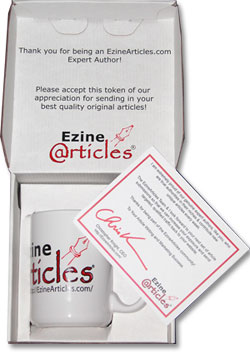Today I went to the post office to check the mailbox and found a nice albeit unexpected surprise waiting for me.
Let me briefly set the stage. I write and contribute a number of monthly articles for both online and offline publishers and have been doing this for sometime now. One of those online publishers EzineArticles.com knows a little something about customer appreciation.
 I get to the post office and along with the other mail I find a small square box with the Ezine Articles logo on the outside. My curiosity is piqued by now and I’m wondering what I ordered?
I get to the post office and along with the other mail I find a small square box with the Ezine Articles logo on the outside. My curiosity is piqued by now and I’m wondering what I ordered?
I open the box and to my surprise I see a nice coffee mug, a bag of coffee, and a note thanking me for being a part of the community and contributing to Ezine Articles.
Ecommerce store owners take note—this type of pro-active customer interaction works! I’m not saying you have to send free gifts to all your customers, but I have said in previous posts that a simple and unexpected hand written note or “bonus” here and there won’t hurt. It builds loyal customers not to mention happy customers.
Not that I needed it to keep writing for them, but it certainly cemented my relationship with Ezine Articles.
Do you reward or surprise your customers? If so how? If not, why? Part of customer retention is keeping your current customers happy. What would happen if you sent an unexpected gift to your current top customers? I’m sure the impact of that small gesture would reach far beyond what you think.
Just look at this case, EzineArticles.com probably had no intention of getting mentioned for their efforts. But their simple gesture of appreciation did just that.
Thanks guys!